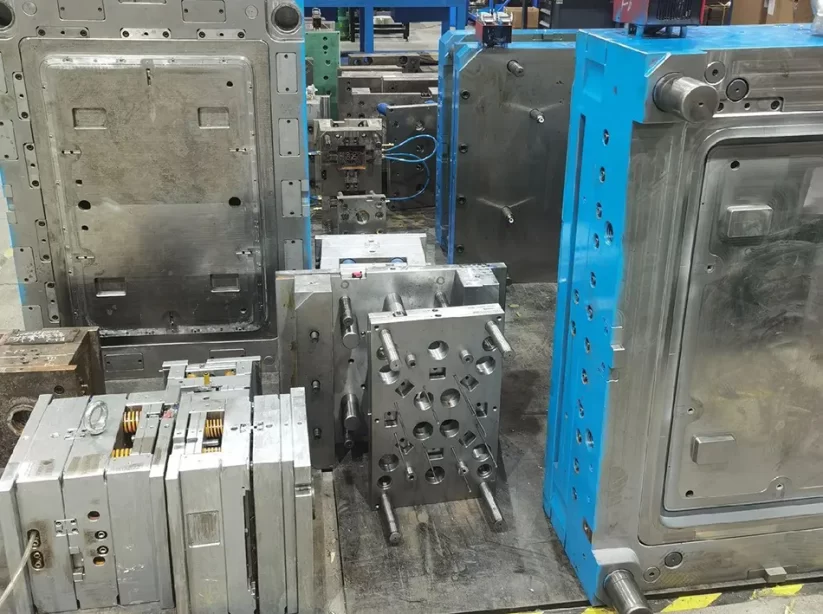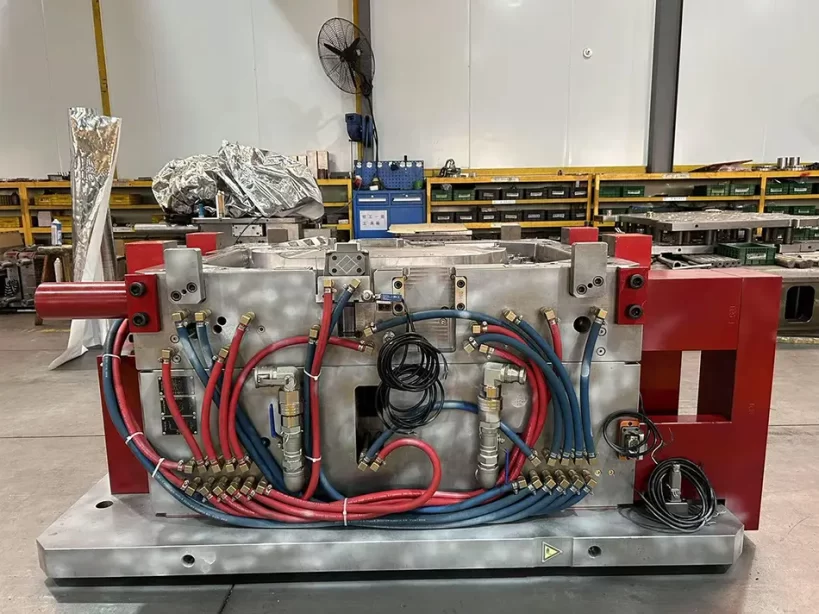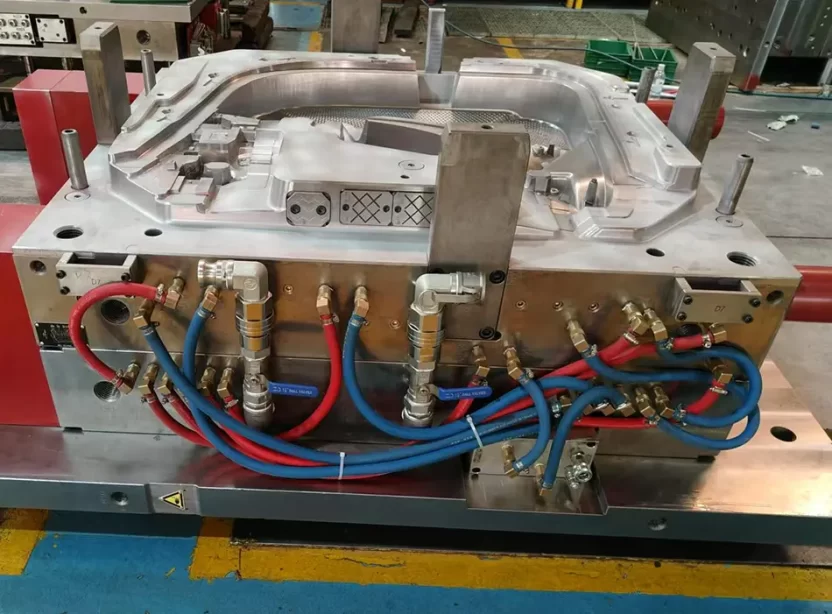How to Verify Injection Molds?
In injection molding product design and processing production, injection mold design and manufacturing are very important. Among them, the completion of the acceptance of the injection mold is the mold in the use of the first to do, which is also necessary to do the work.
Acceptance of injection molds includes molding, mold testing, injection molding process, and plastic products quality inspection. Acceptance is to test the quality of the mold, which is a necessary process.
Molding refers to assembling a complete mold from a single part. Molding acceptance can check whether the mold manufacturing is correct, standardized, and reasonable.
After the mold is made, before the delivery of production, a trial mold should be used. The purpose of the trial mold is not only a simple test to see if the mold can be used but also includes the assessment of the reasonableness of the mold design and exploring the molding process conditions.
In assessing the mold design work, trial mold period to be smooth, efficient, and fast to prevent omissions, according to the mold design specifications and proofreading table for design considerations.
Mold design specifications, whether the content of scientific, comprehensive, or innovative mold design later work, will play a leading role in the outline; thus, the critical content of the mold inspection before the mold trial will also be put forward.

Mold design specification and proofreading table
Mold design specifications need to be.
(1) specifications produced by the year, month, and day, the person responsible for negotiation name;
(2) Product name and product drawing number;
(3) Delivery date for completion of mold manufacturing;
(4) The number of molds to be ordered and the number of products to be removed from each mold;
(5) The material of the product and the shrinkage rate of the molding;
(6) Specification of the molding machine to be used;
(7) The number of molding orders (total number of orders per month);
(8) Matters that need to be done in the manufacture of mold molding:
Mold design (assembly drawings, engraving diagrams, parts drawings);
Mold materials (heat treatment);
Mold surface treatment (texture processing, plating, quenching, etc.);
(9) Mold construction (if there is any in-house specification or suppliable parts, it should be stated);
Form of engraving of the part to be produced (direct engraving, inserts);
Sprue and gateway (hot sprue way, that is, the temperature control method);
Cooling method (cooling water temperature, water quality, connection method, specification of cold and warm water apparatus);
Mold release method (ejector bar, stripper plate, others);
Mold material and heat treatment, hardness; take out the product mode (automatic landing, automatic removal); mold loading and unloading methods; no mold standard parts specifications (with or without the specified manufacturer parts).
(10) product part. The position of the parting surface of the product part (PL surface and parting surface of the insert, etc.);
the position of the gate and the position of the fusion mark;
the negotiation between the dimensional accuracy of the product part and the post-processing part;
the tilt of the mold release and the position of its datum;
the presence or absence of the insert; the burr state of the surface of the product part;
the degree of finish of the product part (degree of processing of the wheel);
the use of the product part and the important part of the product part.

Mold design checklist
(1) Size of mold frame: whether it is too small and not rigid enough.
(2) Mold material: whether it is easy to cut, whether the hardness is appropriate.
(3) Size of pickup: whether it is too big.
(4) Position and shape of mold parting line: whether the parting line is uncomplicated (no inclined straight line).
(5) Dead center demolding method: whether it is a simple and strong method; how is the power source; whether the action sequence has been considered.
(6) Ejector method and position: whether it is a simple and solid method; whether it will hinder the appearance; whether it is well balanced; what kind of power source is used.
(7) Location and type of gate: whether it is a structure for smooth inflow; whether the plastic flows naturally from the thick part to the thin part; how to deal with the cut-off of the gate; whether the gate treatment will hinder the appearance; whether there is post-processing that must deal with the gate; whether it will hinder the molding.
(8) take the number of mold cavities and sprue way: whether a section of the leading casting channel mold is completed; take the majority of the mold cavity arrangement is balanced; take the majority of the mold cavity, its accuracy can be; whether to reduce the number of mold cavities; sprue is too large.
(9) The structure of the inserts of the mold: whether the structure of the inserts is used effectively; whether the demarcation line of the inserts will hinder the appearance of the molded products; whether the strength of the mold is not enough due to the relationship of the inserts.
(10). The location and shape of the cooling water holes: whether the location of the cooling water holes is prioritized; whether the cooling water holes can flow a large amount of water; whether there will be water leakage concerns; whether the locking and other types of easy to replace.
(11) The size of the assembly relationship of the injection molding machine: Whether a group of molding machines can be jointly adapted to the intended molding.
(12 )Mold construction detail design: whether its movement will be hindered or easy to loosen; whether there will be deformation or loosening of the place; whether the block can be sufficiently blocked.
(13) Is the calculation of molding shrinkage rate appropriate? Is there a mark on the place prone to processing errors?
(14) Whether the drawings and parts are available; whether there is any missing part during processing.
(15) Other special matters: hot sprue part, whether designed to be replaced or cleared simply in case of failure.
Mold inspection content before mold testing
Appearance check
(1) Mold closing height, installed in the machine with the size of the parts, ejector form, open the mold distance, and mold working requirements should align with the equipment’s conditions.
(2) Sharp corners of exposed mold parts should be obtuse. Print the production number.
(3) Medium and large molds should lift holes and rings.
(4) All joints, valves, accessories, and spare parts.
(5) The mold should be marked.
(6) The surface of molded parts and casting system should be smooth and clean, without craters, scars, and other ills. The parts with corrosive plastic should be chrome-plated.
(7) The direction of the flying edge should not affect the mold release.
(8) The sliding parts should have appropriate clearance, the starting and stopping positions should be correct, and the fastening parts should be fastened reliably.
(9) The mold has good stability, sufficient strength, and a balanced working force.
(10) The molding size of the molded parts should be modified.
(11) There should be an appropriate clearance or reasonable pressure-bearing area or pressure-bearing form between the parts in contact with each other (e.g., mutual contact core, convex die, and extrusion ring, etc.) to prevent the parts from being directly extruded.
(12) Before the mold test, it must be on the equipment oil, water, and electrical circuit inspection, and following the provisions of the maintenance equipment, make good preparations before starting.
Air transfer inspection
(1) After closing the mold pressure surface (or parting surface) there should be no gap between.
(2) The movement of the movable core, ejector, and guiding parts should be smooth and flexible, with proper clearance, reliable coordination of movement, and reliable positioning and guiding.
(3) The locking parts shall be locked reliably, and the fastening parts shall not be loosened.
(4) the ejector part should ensure smooth demolding to remove the plastic parts and casting system waste when opening the mold.
(5) The cooling water circuit is smooth, with no water leakage, and valve control is standard.
(6) The electric heater has no leakage and can meet mold temperature requirements.
(7) The pneumatic and hydraulic control mechanism action is correct, and the valve is standard.
(8) Accessories use good.
(9) Air turns are used to check the mold after the phenomenon of damage.
Mold acceptance items after test molding
Quality of plastic parts
Size and finish following the drawing requirements; shape integrity, surface gloss, and smoothness shall not produce an impermissible variety of molding defects and malpractice; top bar residual dent shall not be too deep and generally shall not be more than 0.5mm.
There is no lousy ejector and demolding malpractice; the edge shall not exceed the requirements; ensure that the quality of the plastic parts is stable.

Mold performance
Each working system is solid and reliable, the movable parts are flexible and smooth, the action is coordinated with each other, and the positioning start and stop is correct to ensure stable and regular work to meet the molding requirements and quality of plastic parts and production efficiency;
demolding is good, the plastic parts to stay, the direction of the fall in line with the design requirements;
inserts are easy to install, reliable, and correct;
the molding conditions and operation should not be harsh, easy to grasp the production;
he main force parts have sufficient strength and rigidity;
molds Installation of good stability, easy to adjust, work safety;
feeding, taking out the material handle and plastic parts convenient and safe;
consume less plastic; fittings and accessories of good performance.
Based on the above check, the correct choice of forming conditions is the key to the success or failure of the test mold work.
After acceptance, mold can be put into production, which can reflect the mold product design and forming process’s inherent injection efficiency and product quality performance, which is an essential factor in the verification of mold economy.
Conclusion
The acceptance process for injection molds is a critical step in ensuring the efficiency and quality of injection molding production. It thoroughly evaluates mold design, assembly, trial molding, and product quality inspection. Following the specified procedures—such as design specification checks, pre-trial mold inspections, and post-trial mold performance assessments—validates the mold’s accuracy and reliability and guarantees that the molded products meet design and performance requirements.
By adhering to these systematic acceptance steps, manufacturers can achieve stable production, enhance efficiency, and deliver high-quality products while confirming the mold’s economic value and practical functionality.